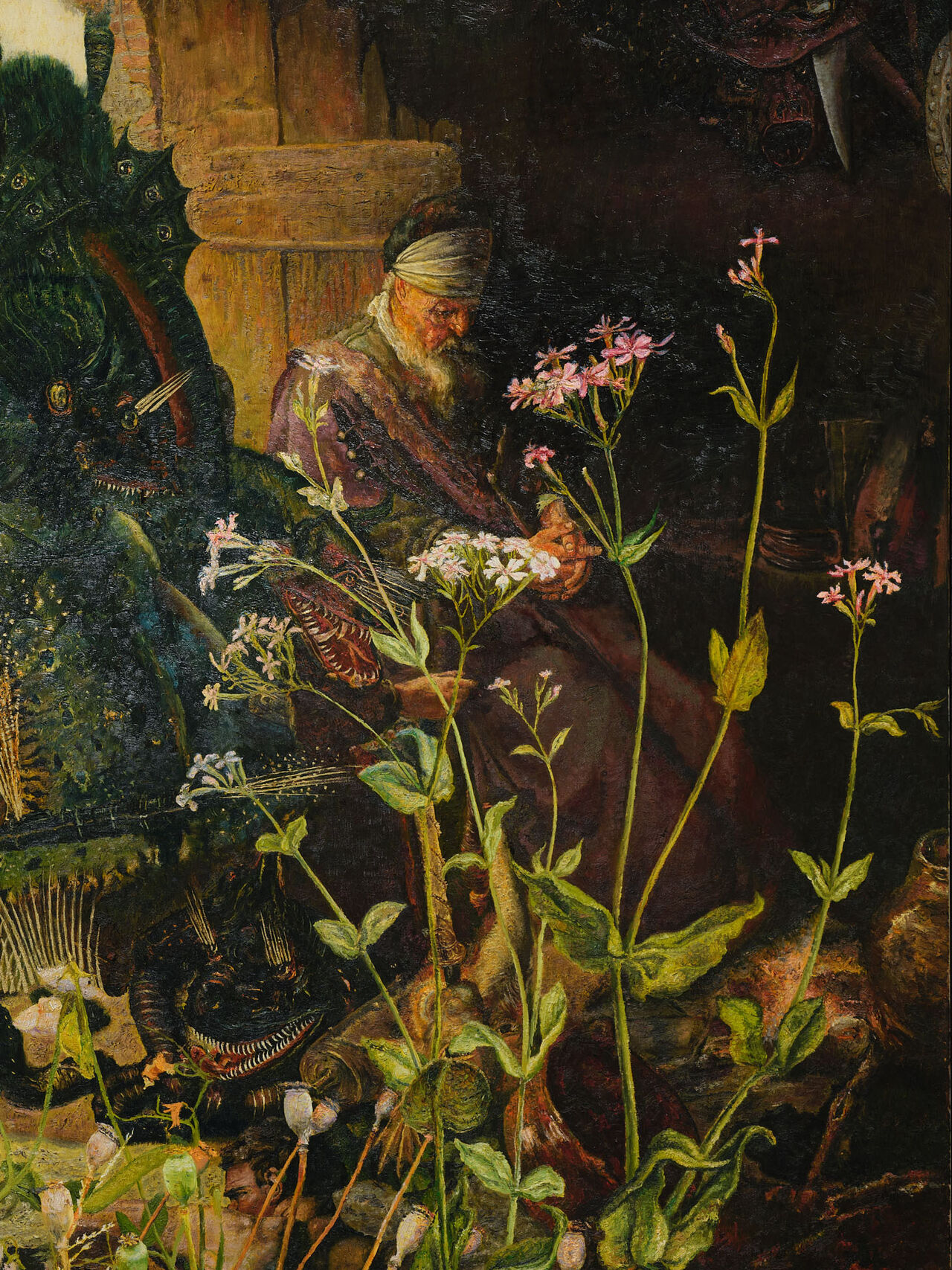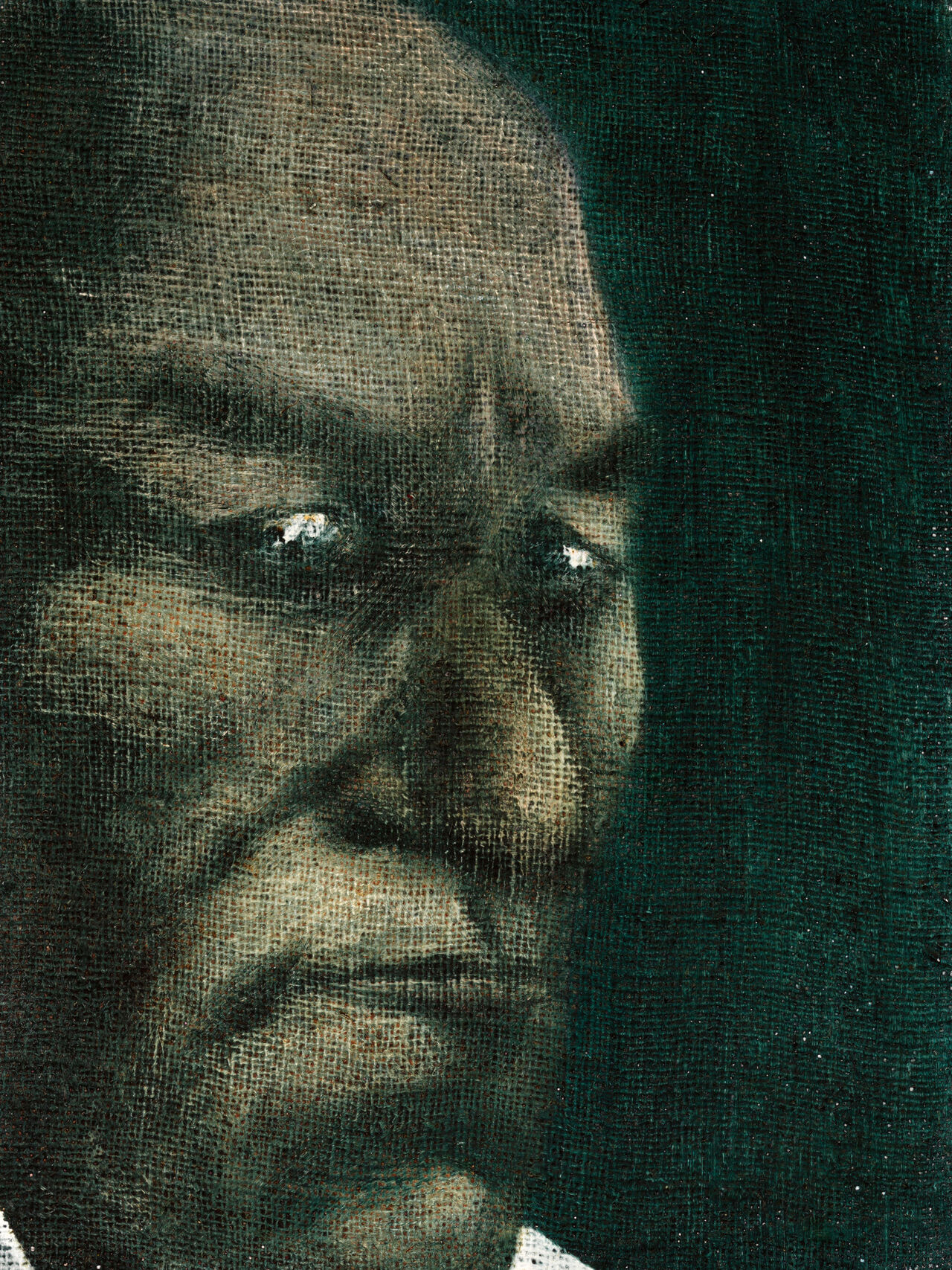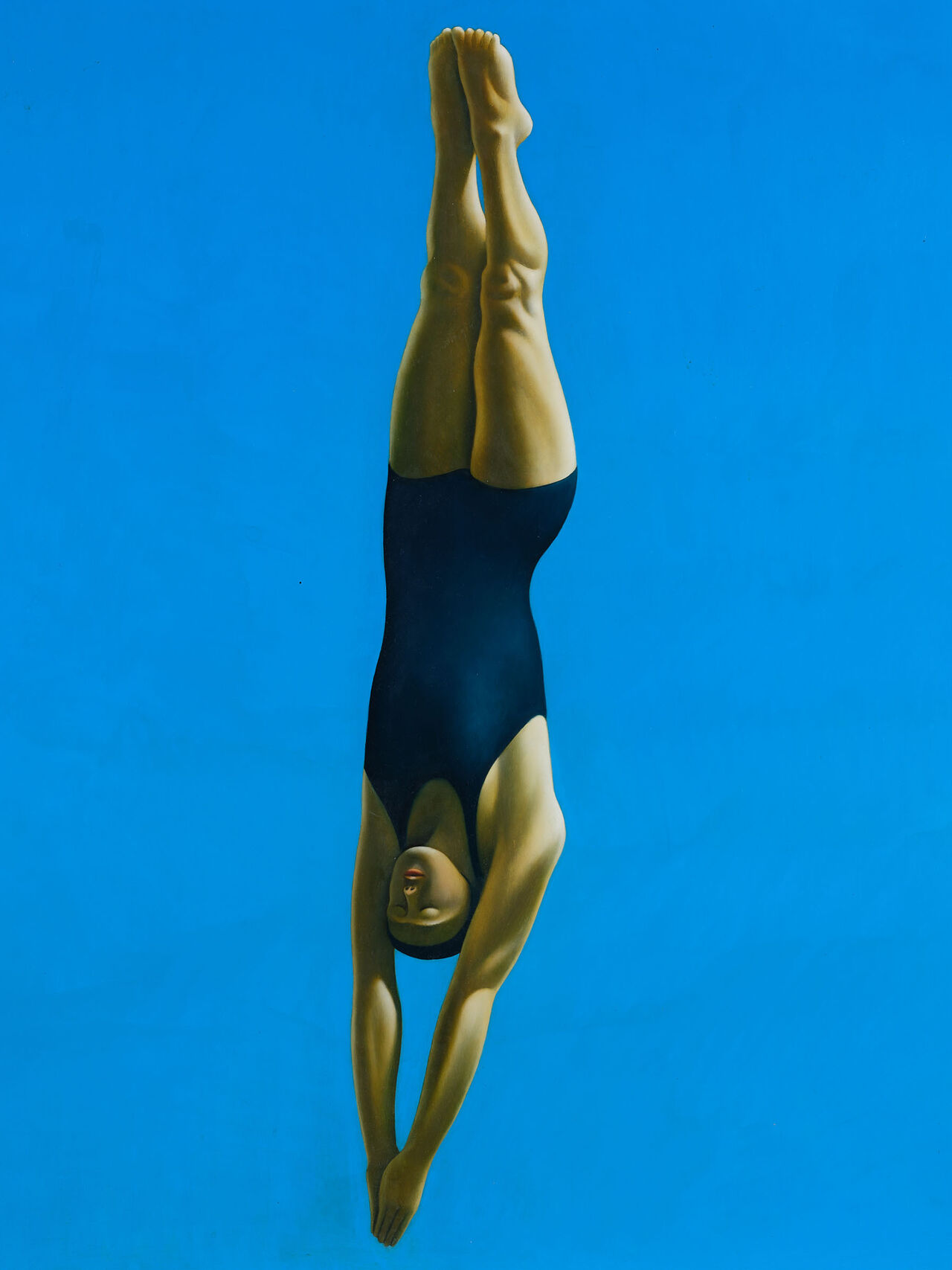On Francis Upritchard
Peter James Smith
Essays
Posted on 30 September 2025
The Upritchard grouping of four works tracks the artist’s career from her craft-meets-museum Walters Prize win in 2006, through to more recent figurative sculptures with emblematic gestures. Her early works seem immediately familiar through their handcrafting of everyday op-shop objects and their domestic scale. But they remain mysterious, almost mystical, as if they have been rescued from a pagan ritual and then outfitted for museum display.
The small Man Urn, 2007, features a found c1970s ceramic vessel, to which Upritchard has fashioned a head-piece stopper. We daren’t lift the lid on this amusement, as the artist reminds us that the canopic urns in ancient Egypt held embalmed internal organs of the dead.


With Lamp, 2009, Upritchard offers complete domestic familiarity. But…on this ceramic lamp base the artist places a light-retardant ceramic shade, brown, fusty and dusty. A small gargoyle face is politely fashioned into the side of the shade to give a definite feeling of unease for anyone brave enough to read by the light of this lamp in a domestic living room setting. So, function is quashed, and meaning is left open to construe. Similar lampshade works from this series were part of Upritchard’s celebrated 2009 Venice Biennale presentation.
In recent years, the artist has moved away from vitrine and plinth presentations of refashioned found objects and mock artifacts, to examining the possibilities of small figurative watercolours and sculpture. When you consider the rich British and colonial tradition of bronze sculpture or the studied marble perfection of Greek statuary in the Acropolis Museum at the Parthenon, Upritchard’s take on the figure is uploaded on personality and anti-heroic gesture. From the same Venice period of mono-coloured figures, the lurid yellow female of Palm, has a distinctly Woodstock feel full of free-wheeling music love and peace with the outstretched hand gesture ironically saying no (to drugs? To Vietnam? To the National Guard?). The figure points to a failed flower-power 1960s Utopia that politics inevitably smothered. Even with the support of hidden armatures, the modelling material is pushed into lanky limbs that curiously make gesture more important than mass.


Yet Upritchard can work with mass. On a vast architectural scale, and this time in blue and violet, we can currently see Here Comes Everybody, 2022, a group of towering bronze figures commissioned for the Welcome Plaza for the new building at the Art Gallery of New South Wales. Upritchard loves to play with dramatic changes in scale. After seeing these giants, the watercolour Untitled makes a wonderful gentle counterpoint with a (this time blue) pixie-like figure clothed in a green mantle. The clothing is more like a covering, a drapery, as the artist converses with us on skin-deep appearances. This is watercolour that you can see through, and on a scale that you can warm to.


